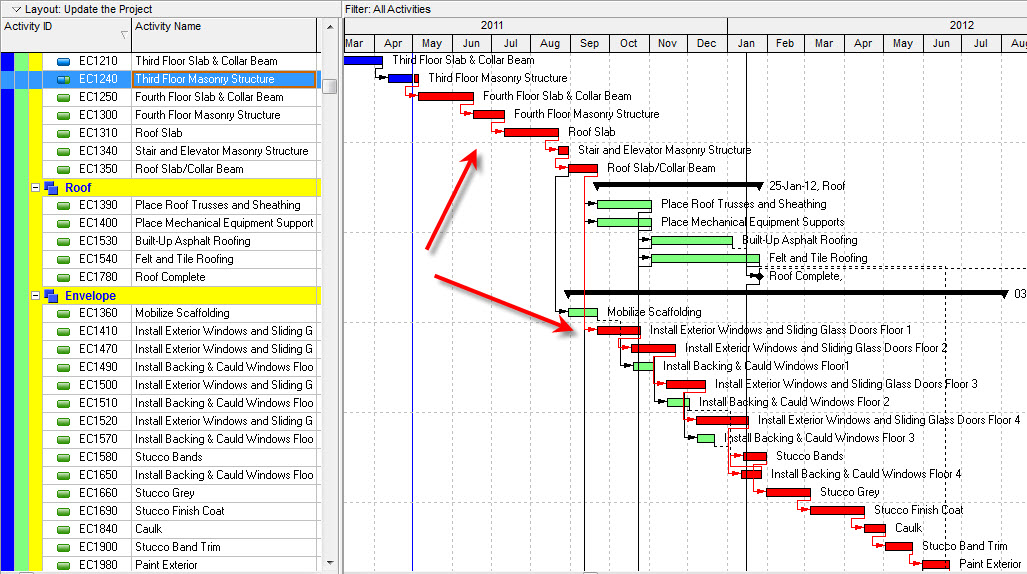Being a solo agent in today’s real estate market necessitates wearing a lot of hats, and it’s likely that not all of them fit. Do you ever get overwhelmed or have trouble balancing all the requirements needed to consistently compete and win your share of business? Today I am going to share a simple but powerful principle that we use in our businesses (and try to implement in every aspect of our lives) to achieve our goals.
If you have ever been to Las Vegas, it seems that there is always a new casino being built or added onto. Have you ever sat and wondered how massive projects like this, with their huge quantity of material, labor, and immense detail, get built in a matter of years?
In the early 2000s, before my career in real estate, I worked for a large general contractor in Las Vegas as a project engineer on MGM’s $9.2 billion Project City Center. I would later go on to work for a smaller company as a project manager building out bars and restaurants in many of the casinos on the strip. One of the first things a manager of a project does is create a schedule. A construction schedule is made up of all the activities required to complete a job. Tasks are sequenced in the order that they need to happen in the field: frame a room, rough electrical, mechanical and plumbing, insulation, drywall, tape, texture, and paint.
“In many situations, roughly 80% of the effects come from just 20% of the causes.”

All the tasks in a schedule are necessary to complete the project, but there are only a small number of tasks that will have the most impact on the project. These crucial tasks make up what’s called the “critical path” in a project. This is the series of tasks in a construction schedule that, if done too late, will cause the whole project to be delayed. Focusing resources on these critical few tasks to ensure they are completed on time will exponentially increase the odds of a successful project.
The critical path is a real-life example of what famed economist Vilfredo Pareto would call the rule of the vital few and the trivial many. Later coined the Pareto principle or the “80/20 rule.” It states that in many situations, roughly 80% of the effects come from 20% of the causes. In the case of a critical path for a construction schedule, it could be said that 20% of the tasks account for 80% of the project’s success. This rule has been applied to economics, criminology, software programming, and business.
I like the way Gary Keller explains the principal in his book, “The One Thing.” He indicates that in the world of achievement, the notion that everything matters equally is a lie. Keller suggests we take Pareto’s principle and focus even tighter, asking ourselves, “What’s the one thing you can do, such by doing it, everything else would become easier or unnecessary?” It’s this question that caused Keller to step down as CEO of Keller Williams in 1995 to focus on 14 key hires to take his business to the next level. What followed after three years was a consistent year-over-year growth of 40% for over a decade.
In his book, Keller uses the powerful illustration of the domino effect to help show the momentum and power created when dominoes are set up in sequence. It takes a small amount of focused energy to topple the first domino. The longer the chain of dominoes, the more energy they produce. The largest domino fall took place in November 2009 in the Netherlands. It produced 94,000 joules of energy—as much energy as it takes for the average male to do 545 pushups!
This illustration shows so powerfully the importance of sequencing and focus. Here at The Jelmberg Team, we’ve spent massive amounts of resources over the last 10 years to create, identify, vet, test, and implement what we believe to be the most critical and effective systems, tools, strategies, and support. We help our agents implement these systems into their business through a personalized plan that outlines the critical steps they will take to meet their real estate goals. It allows our agents to focus maximum effort solely on the most critical task until it falls like a domino, naturally opening up their focus to the next task. Success builds upon success, sequentially, over time, toward whatever height they have set their goals to.
If you have any questions or you would like to understand more about the systems and support we provide, reach out for a private one-on-one meeting. We would love to help you.





